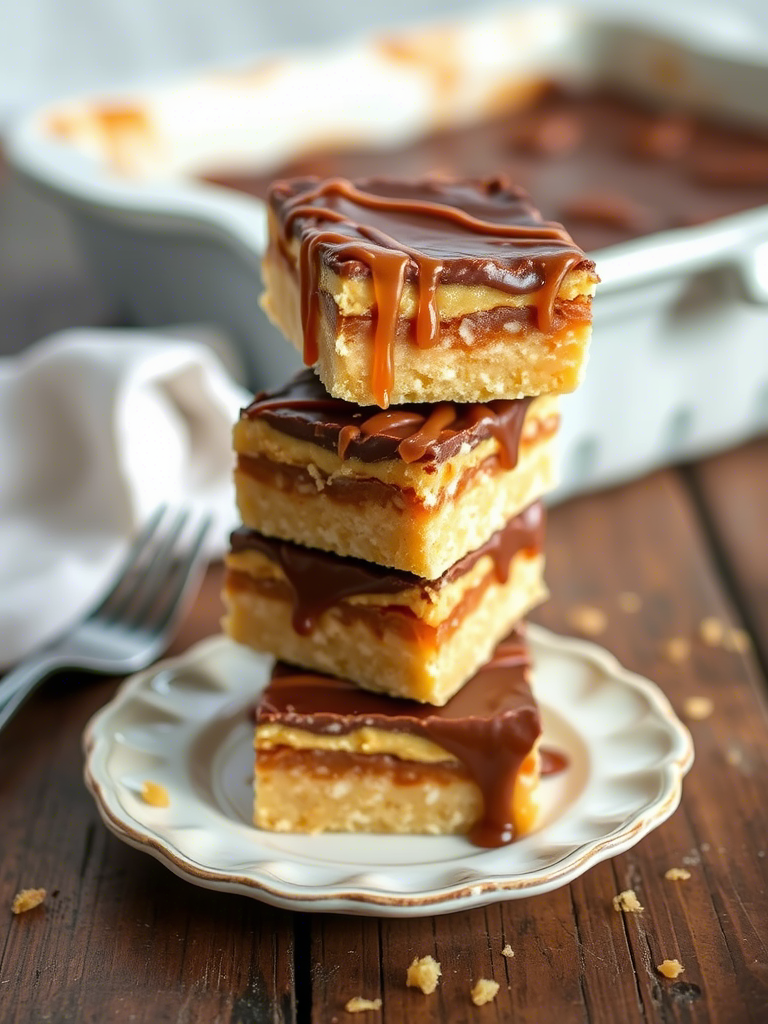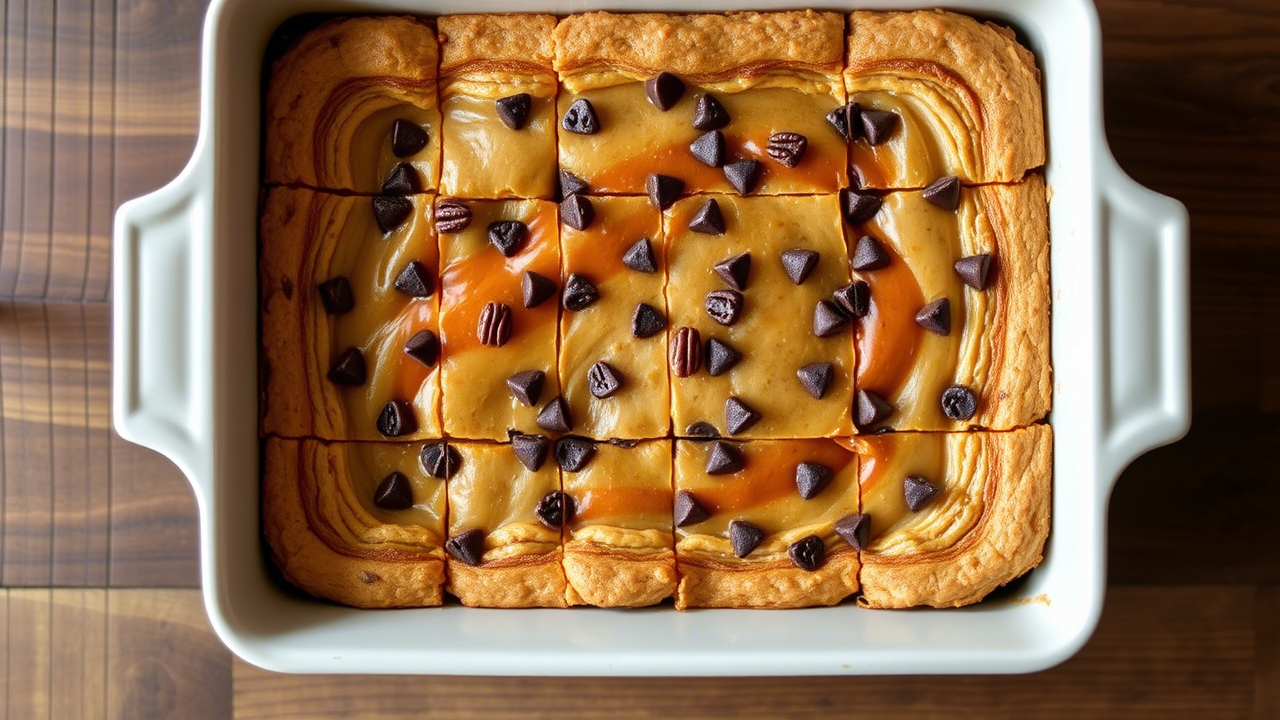There’s a silent whisper among seasoned bakers that cake mix is cheating. But what if I told you that same humble box—yes, that one collecting dust on the grocery shelf—is the core toffee bars dream are made of?
Not every delicious thing in the pastry world needs to start with 12 ingredients and a laminated dough. Sometimes, especially in high-yield kitchen environments, we need shortcuts that actually deliver depth, crunch, chew, and all that buttery glory without 3 hours of mise en place.
Cake mix toffee bars aren’t a compromise. They’re a revelation.
Why Cake Mix Deserves More Respect in Professional Kitchens
Let’s start with the elephant in the mixing bowl: prepackaged cake mix.
You might scoff. I used to. But I’ve spent enough years consulting for bakeries and catering kitchens to know that consistency, efficiency, and scalability are critical. And cake mix? It nails all three.
With a controlled balance of leavening, sugar, and soft wheat flour, cake mix creates an immediate base that supports fat and caramel notes better than many from-scratch recipes do under pressure. The key is how you treat it.
You’re not making cake here. You’re weaponizing the chemistry of it.
The Anatomy of a Perfect Cake Mix Toffee Bar
Let’s talk textures. Because this is where these bars get wild.
A good toffee bar plays in three layers:
- Crunch from the candy.
- Chew from the base.
- Melt from the chocolate.
The cake mix becomes the chew. But only if handled with restraint. Overmixing leads to cakey puff. You want density—moist, blondie-like resistance.
Use a yellow or butter cake mix with high fat content. Add just enough butter to saturate it, but not so much it fries in the pan. Egg? Yes, but beat it only till combined. This ain’t a soufflé.
Then there’s the star of the show: toffee.
Real Toffee vs Store-Bought Bits: Let’s Be Honest
Sure, you can toss in a bag of Heath bits and call it done. But anyone who’s boiled sugar past 300°F knows that nothing beats fresh toffee made in-house.
Real toffee isn’t just sweet. It’s got burnt sugar bitterness, browned butter nuttiness, and that sharp snap that cracks beautifully under the tooth.
For those baking at scale, here’s a tip: make toffee in slabs during downtime, then blitz it in a food processor. You’ll get irregular shards—some melt in the bar, others stay jagged. Texture play is everything.
But, hey. Even store-bought bits can be good. Just bloom them first in warm butter. Weird trick. Works like magic. Makes them taste homemade.

Chocolate Is Not Just a Topping—It’s the Binding Agent of Dreams
You ever bit into a bar that had chocolate just flake off? That’s a structural issue. Not just bad luck.
When using chocolate chips or chopped chocolate on top, you gotta layer it while the base is hot. Like, steaming. This way, the chocolate adheres—melts into the crevices, marries the sugars.
Semi-sweet or milk both work, but dark? Dark’s where the flavor gets moody. Especially if you added some sea salt to the base (do that).
If you’re feeling extra, swirl in some tahini or espresso powder into the chocolate before it sets. Not traditional, but this is 2025—flavor layering is the name of the game.
Scaling for Cafés, Caterers, and Bake Sales: The Gold Bar Blueprint
I’ve seen cake mix toffee bars outsell macarons 3:1 at pop-ups. Why? Nostalgia. They remind people of their aunt’s kitchen, but better.
Here’s how to make them work at scale:
- Line your sheet pans with parchment and grease like your life depends on it.
- Cool bars completely before cutting. Preferably freeze them a bit for clean edges.
- Use a hot knife. Every time. Don’t argue with me here.
- Wrap in clear cello bags with handwritten labels. This matters more than people admit.
You can batch 6 trays in under 45 minutes prep time. That’s 144 bars at 2×2 inches. Retail price? $3.50 apiece. Cost per unit? Under 70 cents, even with premium add-ins.
Margins don’t lie.
The Science Behind the “Chew”
Want chewy bars, not crumbly ones? Here’s where a little pastry school theory slips in.
It’s all about moisture retention and starch gelatinization. When you underbake by about 2 minutes and cool inside the pan, steam redistributes through the crumb. This tightens the bar as it rests, but keeps it soft.
Also—corn syrup. I know, people cringe. But a tablespoon or two added to the mix prevents crystallization around sugar-heavy ingredients like toffee. Keeps your bars from becoming sad sugar bricks by Day 3.
Honey works too. Not quite the same chemistry, but close enough.
Emerging Trends: Brown Butter and Bourbon Versions
Younger audiences want what I call elevated nostalgia. That’s why you’re seeing toffee bars infused with browned butter, smoked sea salt, or bourbon reduction.
Brown butter adds this hazelnut undertone that’s criminally good with cake mix. But you gotta watch it—if it’s too hot when you add it to the mix, it’ll cook the egg. Use a thermometer. 90°F or under.
Bourbon? Reduce it. Always. Alcohol burns off, but the flavor concentrates. Two tablespoons of reduction adds more aroma than a shot of the straight stuff.
You can even press pecans into the top before baking, then glaze with maple syrup after. That’s Sunday brunch bakery case vibes.

Common Mistakes Even Pro Bakers Make
Let’s list ‘em:
- Overbaking. If the edges are too brown, they’ll turn to concrete in 24 hours.
- Using margarine. Just—no. It makes the base greasy and lifeless.
- Forgetting salt. Even sweet bakes need balance. A pinch in both the mix and topping goes a long way.
- Cutting too early. Let them set, or they’ll crumble like a bad alibi.
- Layering cold chocolate. Melt it first if you’re not topping a hot base.
Baking isn’t just mixing things and throwing ‘em in the oven. It’s chemistry + instincts + knowing when to bend the rules.
Nutritional Notes and Dietary Swaps
Let’s talk substitutions.
Gluten-free mixes work surprisingly well. Use almond flour cake mix blends and up the egg by one. They need the structure.
Dairy-free? Use plant-based butter with a high-fat ratio. Miyoko’s or Country Crock Plant Butter are best.
Want lower sugar? Use unsweetened chocolate and homemade toffee with erythritol or allulose. Still chewy, still great.
But remember: these are indulgent bars. Don’t kill their soul trying to make them kale.
Expert Tips for Storing and Serving
Room temp in airtight containers = 5 days freshness. But refrigerate if it’s humid out. Toffee gets sticky, and sticky bars are a disaster to plate.
Serve warm? Sure. Microwave for 10 seconds, serve with espresso. Fancy.
Want drama? Plate with a smear of salted caramel sauce, dust of cocoa powder, and a tiny basil leaf. People will think you trained in Lyon.
Final Thoughts: Bake Smart, Not Just From Scratch
There’s a weird pride in saying, “I made this from scratch.” And sure, there’s a time and place for artisan work. But cake mix toffee bars prove something deeper: that creativity, intention, and a deep understanding of ingredients can turn even shortcuts into signature dishes.
Use the mix. Own it. Layer it, twist it, flip it on its head.
That’s what professional baking is really about.
Innovation wrapped in a chewy, chocolate-drenched, butter-crunch bar.
You just might never go back.
FAQs
What type of cake mix is best for toffee bars?
Yellow or butter cake mix works best for rich, chewy texture and flavor.
Can I use store-bought toffee bits?
Yes, but bloom them in warm butter first for better taste and texture.
How do I keep the bars from becoming dry?
Slightly underbake and cool completely in the pan to retain moisture.
Can I make cake mix toffee bars gluten-free?
Yes, use a quality gluten-free cake mix and add an extra egg for structure.
How do I prevent the chocolate from falling off?
Layer it while the base is still hot so it melts and adheres properly.
What’s the secret to chewy texture?
Moisture retention, minimal mixing, and slightly underbaking.
Can I make these bars dairy-free?
Yes, use high-fat plant-based butter alternatives like Miyoko’s.
How long do they stay fresh?
Up to 5 days in an airtight container at room temperature.
Can I freeze cake mix toffee bars?
Absolutely—wrap tightly and freeze for up to 2 months.
What’s a good way to upscale them for cafés?
Add brown butter, sea salt, or bourbon reduction for elevated flavors.

Mariana is a passionate home cook who creates delicious, easy-to-follow recipes for busy people. From energizing breakfasts to satisfying dinners and indulgent desserts, her dishes are designed to fuel both your body and hustle.
When she’s not in the kitchen, she’s exploring new flavors and dreaming up her next recipe to share with the Foodie Hustle community.

